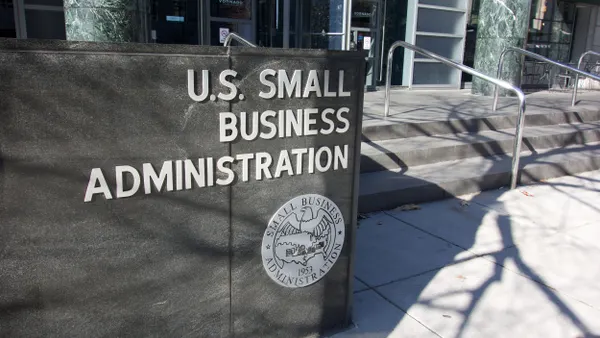Dive Brief:
- The Federal Aviation Administration announced last week that it will allow Boeing limited authorization to issue airworthiness certificates for some of its 737 Max and 787 Dreamliner plane models, effective Sept. 29.
- An airworthiness certification denotes that the commercial or cargo aircraft is safe to fly, according to the FAA website. The agency revoked the company’s 737 authority in 2019, following two crashes that resulted in the deaths of 346 people, as well as the 787 in 2022 due to production quality issues, according to the press release.
- Additionally, the FAA proposed to issue fines of over $3.1 million against Boeing for safety violations that occurred from September 2023 through February 2024. The company has 30 days after receiving the agency’s penalty letters to respond, according to the Sept. 12 press release. Boeing did not reply to multiple requests for comment on the FAA’s decision and penalty proposal.
Dive Insight:
Boeing’s commercial aircraft segment has faced safety issues and fines after the Lion Air crash in 2018, the Ethiopia Airlines crash in 2019 and last year’s mid-exit door plug on Alaska Airlines that blew out mid-air. The issues prompted the FAA to increase its oversight of the company and Boeing invested billions in improving its production processes and restoring its reputation.
While Boeing will retain some control of its airworthiness certification, the FAA said it will continue to “maintain direct and rigorous oversight” of the plane manufacturer’s operations. Boeing and the agency will also alternate weekly in issuing the certifications.
Additionally, the FAA renewed Boeing’s Organization Designation Authorization for three years, which took effect on June 1. The agency’s Congress-mandated oversight program supervises and conducts inspections for companies in an effort to drive performance improvements, such as safety management processes.
While Boeing had previously made changes to its safety management systems and culture following the two fatal crashes, an independent expert panel report released last year found that many issues remained unresolved.
The latest proposed penalty fines address the safety violations that occurred during the five-month period, including the mid-exit door plug on Alaska Airlines that blew out mid-air on Jan. 5, 2024.
Other allegations the FAA noted against Boeing include interfering with safety officials’ independence and “hundreds of quality system violations” at the company’s 737 factory in Renton, Washington, and Spirit AeroSystems’ fuselage facility in Wichita, Kansas. Furthermore, Boeing allegedly presented two “unairworthy” aircraft for airworthiness certification and supposedly failed to follow the FAA’s quality system.
The agency also found that a non-ODA Boeing employee allegedly pressured a designated ODA Boeing worker to sign off on a 737 plane that did not meet compliance standards so that the company could meet its delivery schedule.
Despite the allegations, the agency has seen significant improvements in Boeing’s production quality, an FAA spokesman stated in an email.
“Our intensive oversight and in-depth and rigorous review of data indicated that we can safely allow Boeing to resume issuing airworthiness certificates for some airplanes,” the spokesman said. “This will also enable us to position more safety inspectors at the most critical points in the manufacturing line.”
The FAA’s proposed multi-million-dollar fines and reduced oversight have seen pushback from Democratic senators. Connecticut Sen. Richard Blumenthal sent a letter to the agency last week seeking transparency about its enforcement approach.
“The FAA stated that it applied its maximum statutory penalty authority. If so, that fact only underscores the inadequacy of current law,” Blumenthal said in the Sept. 23 letter. “But if there was discretion in how penalties were calculated — or if reductions are likely to follow — then the FAA risks sending the message that systemic safety violations carry no serious consequences.”














